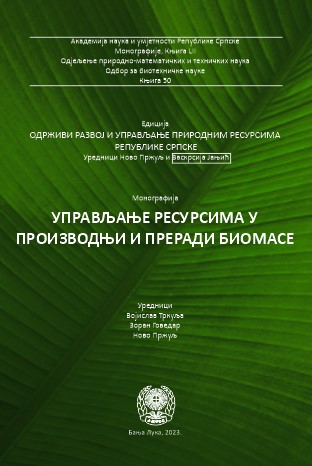Land as a resource for biomass production
DOI:
https://doi.org/10.7251/EORU2306105DZKeywords:
Biomass, marginal lands, land capability class, soil fertility, price of agricultural landAbstract
Soil cover on the area of the West Balkans is very heterogeneous. Due to limited possibilities of increasing arable lands, an issue relating to rational utilization of the existing land reserves has been raised. Namely, an increase of food costs, which coincides with global increase of biofuel production, leads to thinking that fuel production induces an increase of food costs. Suitability of land space for specific purpose utilization is based on long-term economy. This problem would be solved by biomass production on marginal lands, because productive arable lands would be intended for food production. Lands that are suitable for exploitation in intensive agricultural production and appropriate for cultivation are classified into I-IV land capability class, and lands that are less suitable and unsuitable for exploitation (marginal lands) are classified into V-VIII land capability class. In the opinion of most researchers, economic production of wood and grass biomass should be developed on the lands of IV-VIII land capability class. Thereby, there is a high percentage of abandoned and marginal agricultural lands in some countries of the West Balkans. Regarding a high percentage of meadows and pastures, which are mainly on land areas of V-VIII class and insufficient exploitation thereof, the potential of available land areas for crop cultivation for obtaining biomass is very big. They can include even temporarily lost areas (greenfields and brownfields) as well as the areas under powerlines. Land composition has a limited effect on elements concentration in the biomass and on its quality. The crops cultivated for obtaining biomass generally have low demands for nutrients and are adaptable to various land conditions. The reserves of the land organic carbon can be increased by biomass production, and in that way soil fertility can be improved. Whether through biomass production the biodiversity will be improved or decreased, it depends on the mode of utilization of land areas and on the cultivated crop management practice.
